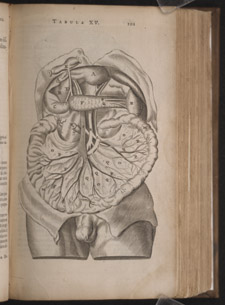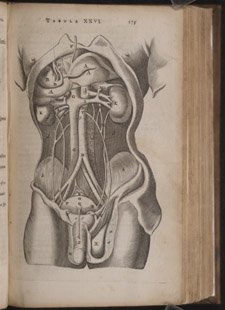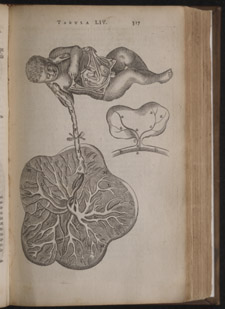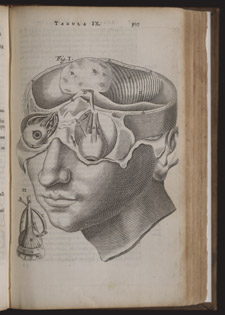Thomas Bartholin (1616-1680)
Thomae Bartholini Anatome ex omnium veterum recentiorumque observationibus…. Lugduni Batavorum: Ex officina Hackiana, 1673. Fulltext online
Born into a Danish family of physicians, Thomas Bartholin became a doctor, theologian, and mathematician. He is best known for discovering the lymph vessel system in humans, following Harvey’s work on the circulation of blood. Bartholin was first to describe the thoracic duct in humans, shortly after Jean Pecquet recognized this duct in animals. Bartholin edited an anatomy text that his father wrote, and in the new edition, he recognized the work of two contemporary anatomists, Gasparo Aselli and William Harvey. During his lifetime Bartholin was considered by some to be the most important anatomist because of his fame as a teacher. Like his father he was a prolific writer, with several textbooks to his name, but many of his books were merely revisions of his father’s work.
next author: Nicholas Culpeper (1616-1654).





